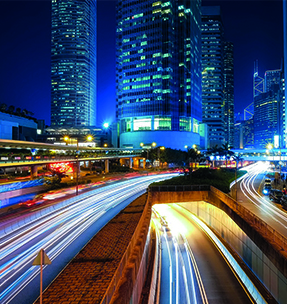
The Future of Driving
Self-drive cars seem unimaginable for many, however, with the introduction of 5G and the US Department of Transportation proposing a 10-year plan to invest $4bn in development, driverless cars are a real possibility for the future of driving.
Driverless cars will work with radar, cameras and lidar, a system that emits invisible laser light that reflects off an object in view which in turn times the speed of the reflection to measure its distance creating a three-dimensional view of the world.
The vehicles won’t just rely on sensors; there is a human element required also. A fleet of drivers will travel the streets in ordinary cars, scanning for changes in previously mapped roads. These changes are pushed, once a month, to driverless vehicles, so that the cars can interpret the roads correctly as they drive.
Another requirement for the car’s operation is of course infrastructure. Sensors will need to be placed throughout the streets in cities alongside other infrastructures such as subway grates and sewer lines.
Of course, a city can benefit from a whole host of applications by deploying sensors throughout the streets. There is bus arrival times, parking space occupancy and pedestrian safety to name just a few. Not to mention a commercial benefit such as the number of times a billboard is passed or number of people that stop at a shop window.
Driverless cars will mean a huge reduction in the amount of cars on the road as the idea is to share a vehicle, therefore reducing the amount of congestion and accidents as well as cut emissions and save families thousands in not having to purchase a car. A recent study from the University of Texas claims that one shared vehicle could replace around 11 privately owned vehicles.
California’s department of Motor Vehicles has approved the testing of self-driving cars to start in the state later this year. Until now, California has only allowed testing with a driver, however, with the rules having been relaxed testing can commence without a driver and push on development, meaning driverless cars may be on sale as early as next year.
California isn’t the only place to be testing driverless vehicles. This year Las Vegas has tested a driverless bus, and Boston and Chandler AZ have been testing driverless cars.
Fiber is at the heart of all next generation developments such as self-driving cars. Without it, smart city applications would be redundant of the speed needed to deliver the real time data that is required. Fiber along with the introduction of 5G means a hugely powerful connection to support applications.
5G means denser wireless networks that will speed up connections with better broadcast capabilities, this means networks can distribute large amounts of mapping data without time lags, perfect for a sophisticated system such as driverless cars to operate upon.
